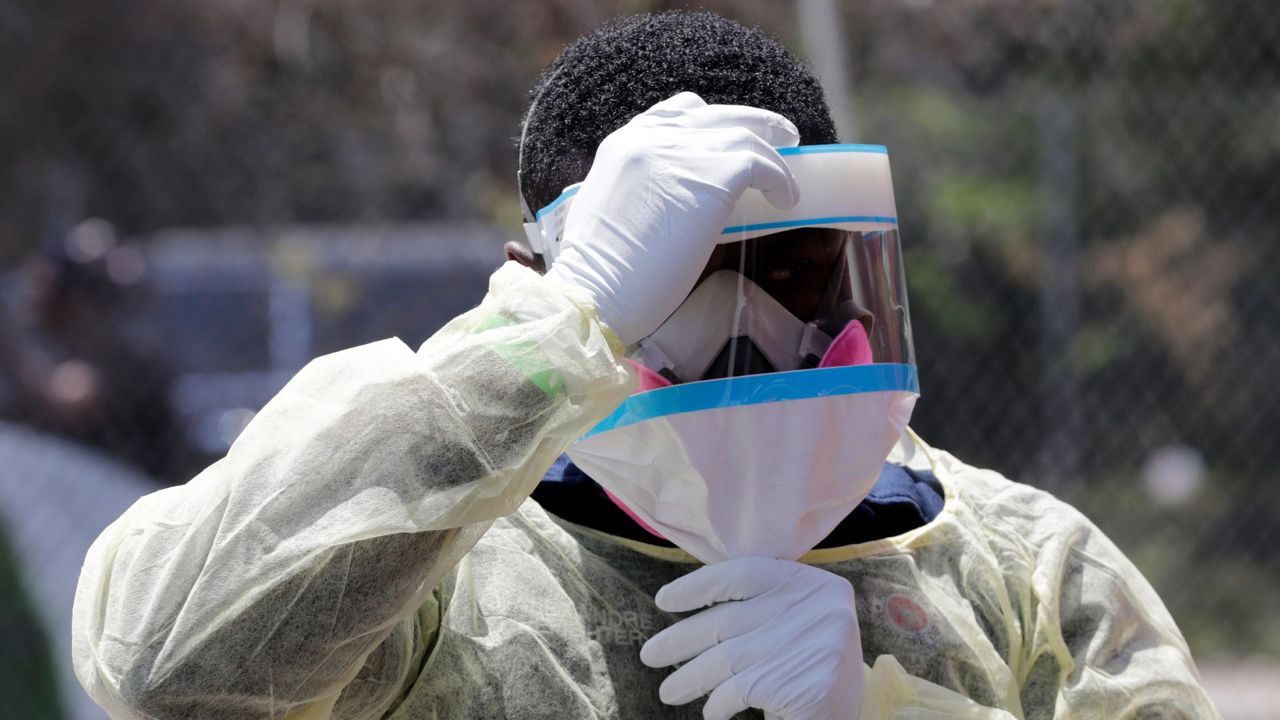ORLANDO, Fla. — Suggestions that Florida’s peak of coronavirus cases could come sooner than expected has local health officials warning that's no reason to loosen social distancing requirements.
- CORONAVIRUS LIVE UPDATES: In the Central Florida area | In the Tampa Bay area
- COVID-19 IMPACTS ON: Airports, Transportation Systems | Sports Events and Teams | Attractions | School Districts and Universities | Retailers, Restaurants Adjust Hours
- FREE CHARTER WIFI: Charter Communications to Offer Free Broadband, WiFi Access to Families with Elementary, College Students
- COMPLETE COVERAGE: Spectrum News | CDC | Florida Department of Health
The Institute for Health Metrics and Evaluation at the University of Washington is now predicting a peak of coronavirus cases in Florida on April 23, weeks before earlier expectations.
The group's prediction estimates 149 deaths on that day before a downward trend extending into early June.
The state of Florida on Wednesday surpassed 15,000 cases, with more than 300 deaths.
“The thing with modeling is that it will change every time you enter new data,” Dr. Raul Pino, director of the Orange County Health Department, said Tuesday during a news conference.
Charter Communications has temporarily opened its live stream free to the public. You can watch Spectrum News via our live stream on your desktop or laptop without a subscription by visiting our website and clicking “Watch Live” in the upper right. Charter also is temporarily offering free broadband and wifi access for 60 days to teachers and families with K-12 or college students. To enroll, call 1-844-488-8395. The company also will open more than half a million wifi hotspots across the country.
Pino said data-based predictions can help guide decisions, but cautioned that it's not a full glimpse into reality, nor a reason to let your guard down.
The IHME’s own projection shows that the impact of the coronavirus may likely remain at least until early June.
“What’s important to know is that we are going to be peaking at the end of April, and also important to know to not let our guard down when we peak,” Pino said. “Other places have seen multiple peaks, and it has to do in part with relaxing those social distancing measures.”
While there were 90% more H1N1 swine flu cases in 2009 (60 million cases) in the U.S., COVID-19 has now led to more deaths than H1N1:
- H1N1: 12,469
- COVID-19: More than 13,000 as of Wednesday
IHME estimates the peak date for use of most critical supplies is April 21.
The good news to glean from the group's predictions, if proved true, is that there will be fewer deaths than first predicted and fewer hospital beds needed.
COVID-19 is proving challenging in new ways for governments at all levels. Nationally, experts predict the U.S.’s peak of coronavirus cases to occur April 11, and a massive shortage of hospital beds. IHME predicts 2,212 deaths to occur on April 12 nationally, with the nation’s hospitals falling short by more than 25,000 hospital beds.
Peaks
UNITED STATES
- Predicted Peak: April 12
- Predicted Deaths on Peak: 2,212
- Predicted Deaths by August 4: 60,415
FLORIDA
- Stay at Home Order: April 3
- Non-essential Services Closed: Not implemented
- Predicted Peak: April 23
- Predicted Deaths on Peak: 149
- Predicted Deaths by August 4: 4,357
NEW YORK
- Stay at Home Order: March 22
- Non-essential Services Closed: March 20
- Predicted Peak: April 9
- Predicted Deaths on Peak: 780
- Predicted Deaths by August 4: 13,307
MICHIGAN
- Stay at Home Order: March 24
- Non-essential Services Closed: March 23
- Predicted Peak: April 9
- Predicted Deaths on Peak: 131
- Predicted Deaths by August 4: 2,103
NEW JERSEY
- Stay at Home Order: March 21
- Non-essential Services Closed: March 21
- Predicted Peak: April 12
- Predicted Deaths on Peak: 288
- Predicted Deaths by August 4: 5,277
CALIFORNIA
- Stay at Home Order: March 19
- Non-essential Services Closed: March 19
- Predicted Peak: April 15
- Predicted Deaths on Peak: 67
- Predicted Deaths by August 4: 1,611
MASSACHUSSETTS
- Stay at Home Order: Not implemented
- Non-essential Services Closed: March 24
- Predicted Peak: April 18
- Predicted Deaths on Peak: 213
- Predicted Deaths by August 4: 5,625



